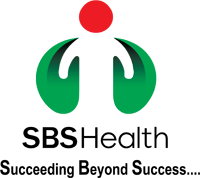Disc Prolapse Treatment - Surgery, Procedure, Risks, Recovery

Treatment Duration
75 Minutes
------ To ------90 Minutes
Treatment Cost
₹ 1,50,000
------ To ------₹ 2,50,000

A Prolapsed or Herniated Disc in the spine is a condition in which a nucleus (spongy material) is displaced from its space and bulges out. It is a spongy cushion that supports the spine by acting as a shock-absorbing material. It is the most common cause of back pain.
A Herniated Disc presses the spinal cord's nerves, thus giving a stinging, pain-like sensation. It may cause pain, numbness, and weakness in the back, arms, neck, and legs. Some of the symptoms can be severe and can cause disturbance in your life.
| Procedure Name | Disc Prolapse Treatment |
| Alternative Name | Spinal Disc Herniation |
| Conditions Treated |
Pain in the arm, Pain in legs, Numbness or tingling in the affected part of the body, Weakness of muscles, Pain in arm |
| Benefits of Surgery | Reduces Pain, Less Recovery Time |
| Treated By | Orthopaedic Surgeon |
You can check Disc Prolapse Treatment Cost here.
Anatomy and physiology of Intervertebral discs
Intervertebral discs are present in between the vertebrae in the spine. The anatomy is as follows:
- These are the cushions that serve various purposes in the spine. These discs are rubbery in nature, just like pillows.
- The central part of the disc is jellylike and soft and is known as the nucleus. The outer part surrounding the nucleus is rubbery and tougher and is known as the annulus. The disc comprises elastin fibres, collagen fibres, and aggrecan.
- The discs are the largest structure in the human body that does not have a blood supply.
- The primary function of the disc is to absorb the spine's stress while performing various activities, like jumping. Further, the discs also prevent friction or grinding between the two vertebrae.
- Several disorders can occur in the discs. These are age-related degenerative discs, herniated discs, thinning discs, and disc degeneration with osteophyte formation.
Expert Doctors (10)
NABH Accredited Hospitals (10)


Conditions treated with Disc Prolapse Surgery
The main aim of disc prolapse treatment is to reduce the pressure on nerves and to reduce pain and other symptoms like:
- Pain in the arm
- Pain in legs
- Numbness or tingling in the affected part of the body
- Weakness of muscles
- Pain in your arm or leg at the time of coughing or sneezing
How is Disc Prolapse Surgery performed?
Initially, the doctor will advise you to start the treatment with medications. If the medicines are not easing the prolapsed disc symptoms, your doctor may order any of the following surgeries to cure the condition:
- Laminectomy: Lamina is a part of the vertebrae covering and protecting the spinal canal. In this process, either a part or the entire lamina is removed. During this surgery doctor will clean the skin with an antiseptic solution. Then they will make a small cut over the area of a prolapsed disc. Then, he will remove the part of the whole lamina bone from your spine. Then he will close the cut and cover it using a sterile bandage.
- Spinal fusion: Your doctor will prepare a bone graft. It is used to fuse the two vertebrae. The surgeon cuts the pelvic bone and removes a small section to prepare the graft. An incision is made above the prolapsed disc for the placement of bone. Then the bone graft is placed between the affected vertebrae to join them. After the graft is placed at the position then, the surgeon will use rods, plates, and screws to fix the vertebrae at their position.
- Artificial disc surgery: Artificial disc surgery is an alternative to spinal fusion surgery. In this surgery, the original disc was replaced by an artificial disc.
The treatment of disc prolapsed by medicines
Most of the time, the problems of the prolapsed disc should start improving on their own after some days of the occurrence. But as a treatment, doctors will always start by prescribing pain killers and other medicines. Medicine that the doctor might prescribe may include:
- Non-prescription pain medicines: If your back pain due to herniated or prolapsed disc is mild to moderate, the doctor may prescribe you painkillers like ibuprofen, and naproxen sodium.
- Medicines for neuropathic pain: Medicines such as amitriptyline are often prescribed if the pain comes back after one or two days.
- Muscle Relaxer: These drugs are prescribed for any muscle spasms. Dizziness and sedation are common side effects.
- Cortisone Injections: If your pain does not reduce after using oral painkillers. The doctor might recommend a cortisone injection to ease the pain.
What to expect Before and During the day of the Disc Prolapse Treatment?
Before the Disc Prolapse Treatment
- Before recommending any procedure for surgery doctor will order some tests like:
- X-Ray: It is ordered to obtain a clear picture of the vertebrae.
- CT Scan: It is used to obtain a clear and detailed image of the spinal canal.
- Nerve Conduction Study: This helps measure the electrical impulse and nerves.
- The doctor may recommend you stop eating and drinking from midnight before the surgery.
- The surgeon may ask you to stop taking some medicines like blood-thinning drugs.
On the day of Disc Prolapsed Treatment
- Wear loose-fitting clothes to the hospital.
- Reach at the scheduled time.
- After registering into the hospital, medical staff will ask you for your medical history.
- Vitals, including heart rate and BP, will be checked.
- You will be wheeled into the operation theatre at the appropriate time of operation.
During the Disc Prolapse Treatment
- Before starting surgery, an anesthesiologist will inject you with a precise dose of general anaesthesia.
- Because of the effect of anaesthesia, you would not feel any pain during the surgery.
- During the surgery, you will be lying down on the table and have a blood pressure cuff on your arm and a heart rate monitor connected to your chest. It helps in monitoring heart rate during the whole procedure.
- The surgery may take several hours to complete.
When is Doctor's consultation needed?
You must consult an orthopaedic surgeon if you are experiencing any of the following symptoms:
- Bleeding from the site of the fracture
- If there are any signs of infection at the closing of stitches
- If there is the occurrence of any tearing in the spinal lining
- If the pain does not reduce after surgery.
Frequently Asked Questions (FAQ)
What are some Myths and Facts about Disc Prolapse Treatment?
- Myth: A long recovery session is needed even after minimally invasive spine surgery.
Fact: Most people who undergo minimally invasive spine surgery can stand and start to walk within a day after surgery with minimal pain.
Last Updated on: 12 December 2022
Author
HexaHealth Care Team
HexaHealth Care Team brings you medical content covering many important conditions, procedures falling under different medical specialities. The content published is thoroughly reviewed by our panel of qualified doctors for its accuracy and relevance.






















